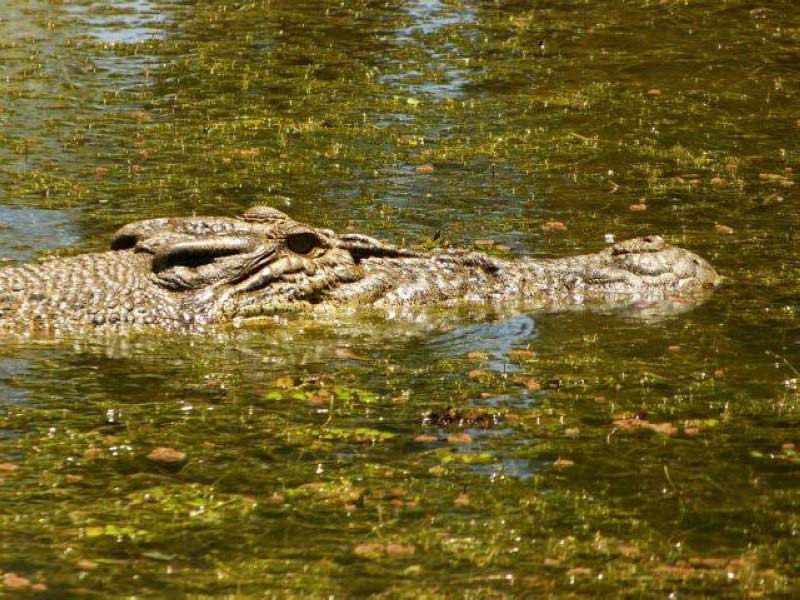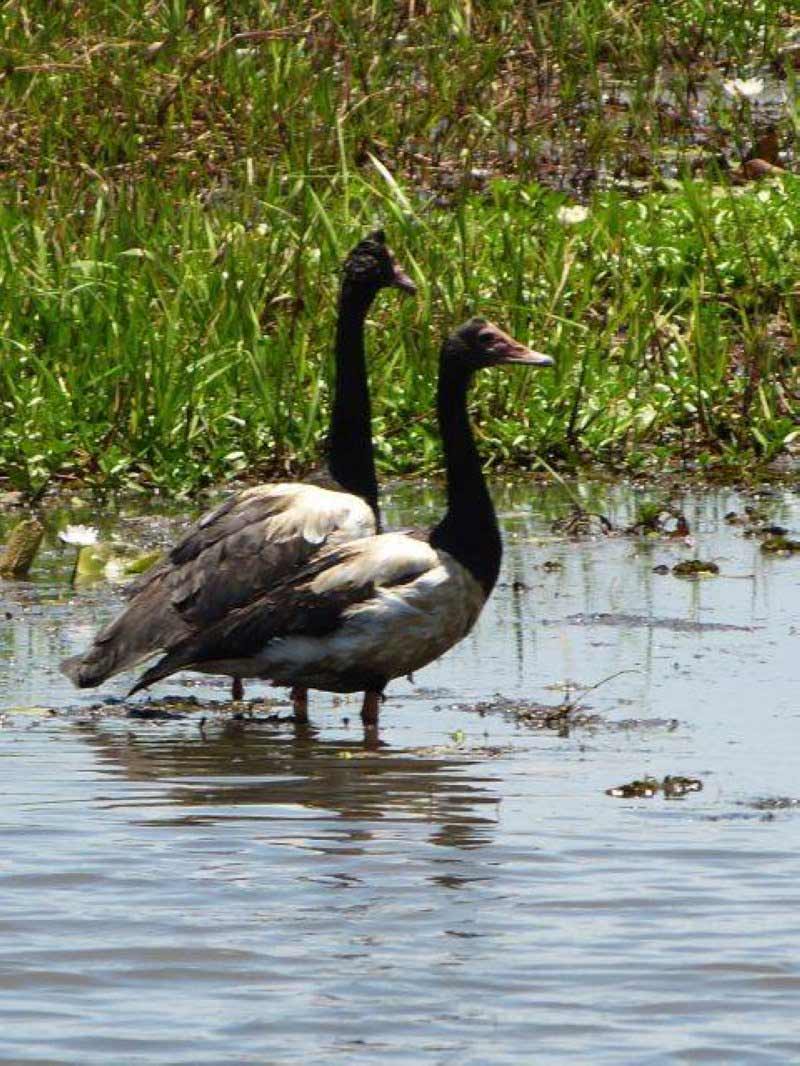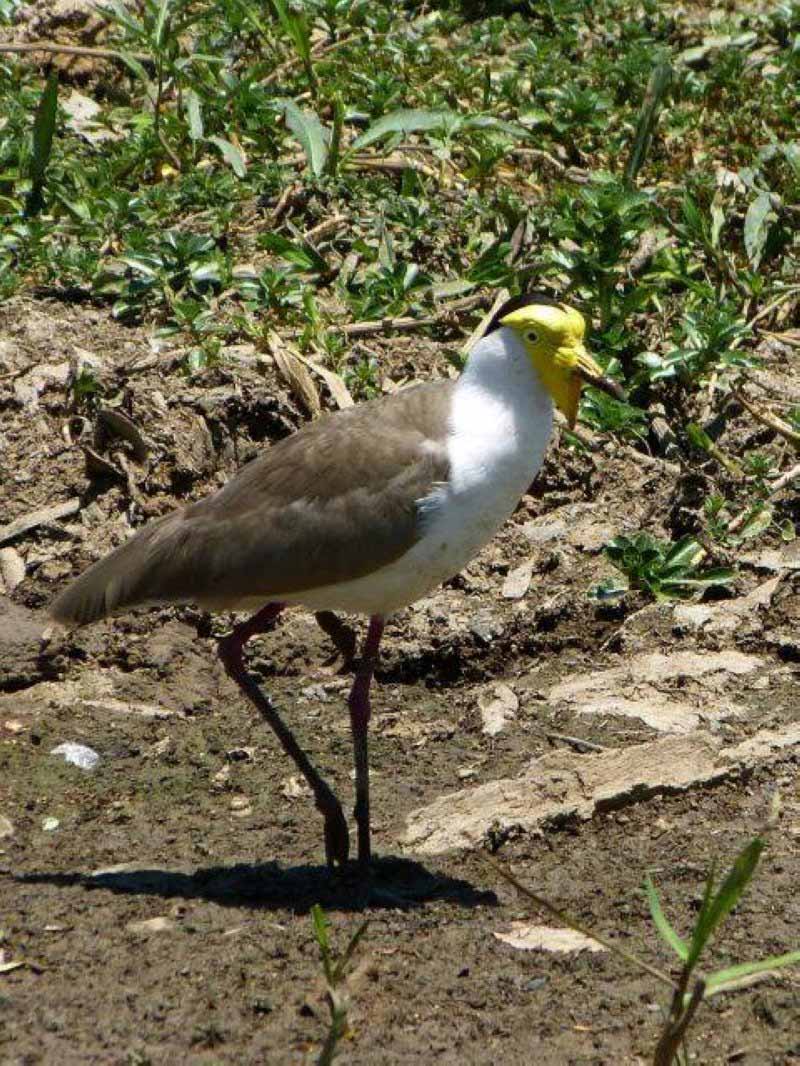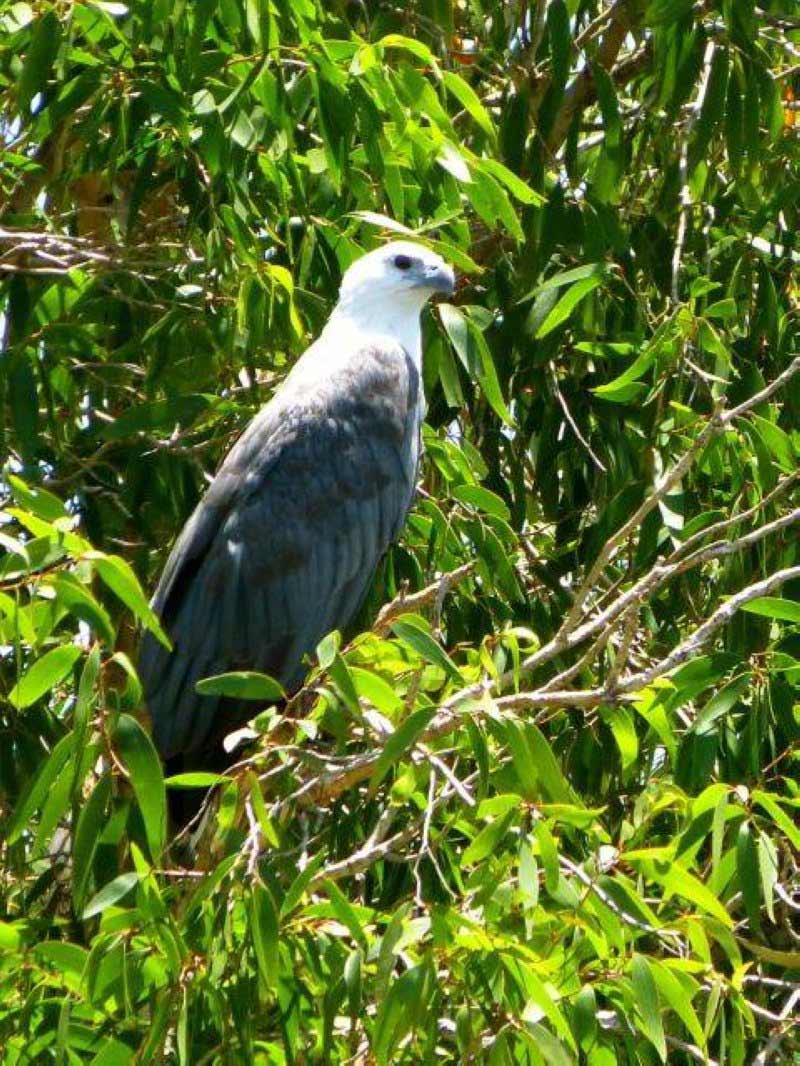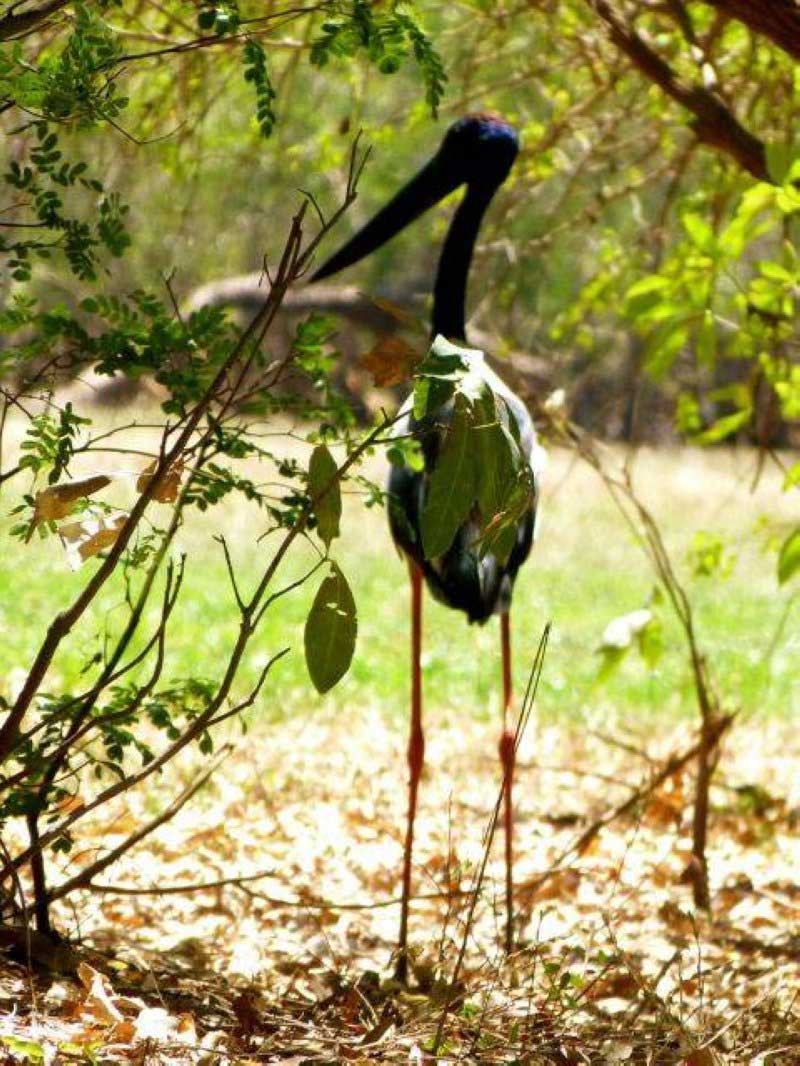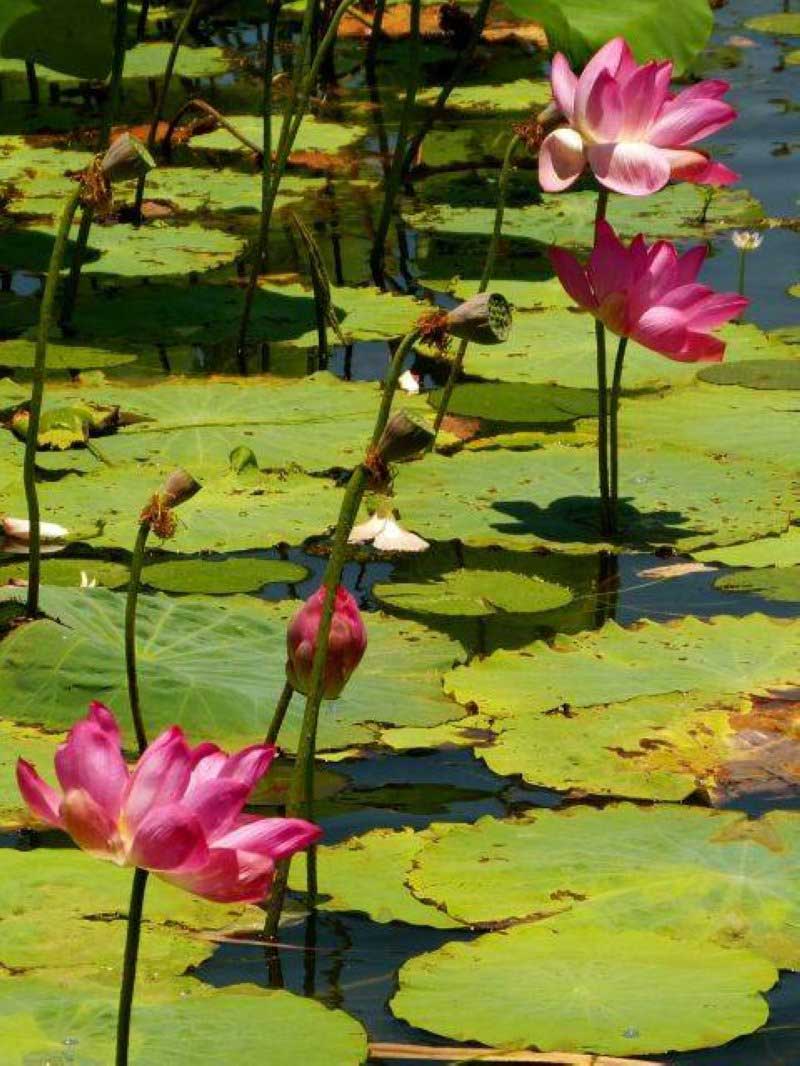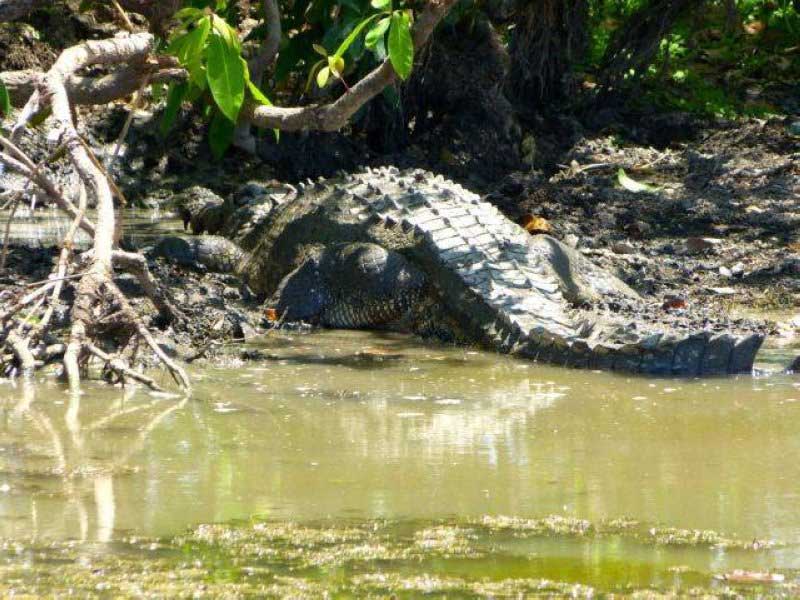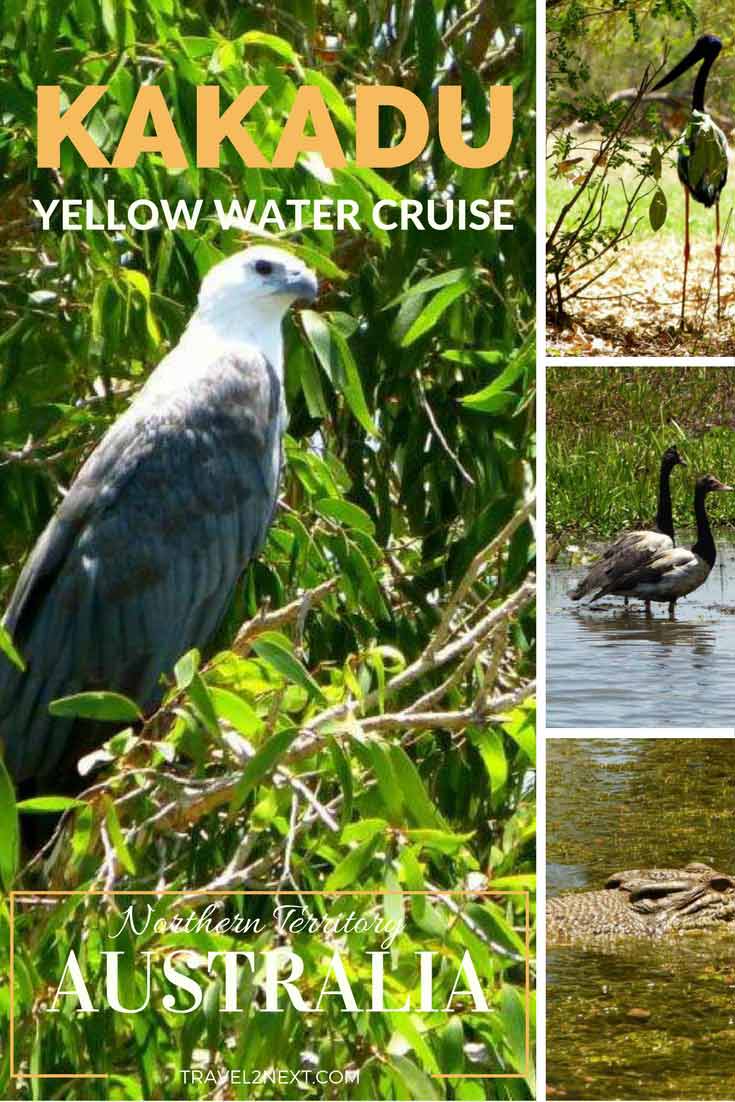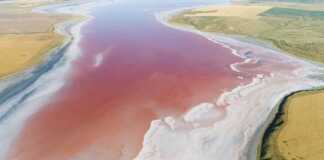We were in Darwin to catch up with Tony’s old friend John Ostara of IndoPacific Marine Education Discovery Centre. Tony planned to also do a local dive with John even though no-one in their right mind dives in Darwin, there isn’t even a local dive shop. Crocodiles have terrified everyone out of the water, although jumping crocodile cruises are popular.
As part of our surface interval activities, we planned a visit to Kakadu National Park. I hadn’t been there for nearly 30 years, so the experience was long forgotten.
Read about our experience diving with crocodiles at Crocosaurus Cove in Darwin.
Contents
Yellow Water Cruise
Yellow Water Billabong is famous as one of the top tourist spots in Kakadu.
It is Kakadu’s most famous wetland and is at the end of Jim Jim Creek, a tributary of South Alligator River.
The best times to cruise are the sunrise and sunset tours when the animals are most active but our travel agent had booked us on an 11.30 am cruise.
What was he thinking?
The hottest part of the day, humidity already building and both humans and animals all just wanting to sleep.
Our expectations were thus reasonably low but this was our only opportunity to do it, so off we went.
Our hosts were the indigenous-owned Yellow Water Cruises with a female Kiwi naturalist guide (yes, the Top End is truly a melting pot!).
My only memory from years ago was seeing a Territorian calmly fishing off the edge of the billabong for barramundi, not giving a care in the world about what he was sharing his space with.
To emphasise that thought, before we had even motored away from the pontoon a two-metre saltwater croc cruised over to check out the boat in less than a metre of water.
Aaargh, what they say is so true!
We cruised around the ecosystems of the Billabong for a while then went out into the connecting South Alligator River.
Despite the temperatures building up to the high 30’s, there was an abundance of wildlife still awake and moderately active.
It was a birder’s or twitchers paradise.
Kakadu houses almost a third of the bird species in Australia.
We saw hundreds of whistling ducks (apparently they don’t quack but have a high pitched whistle!).
Yellow Water Cruise – birdwatching
There were cormorants, kites, magpie geese, Burdekin ducks, great white egrets and a nandeen night heron.
A yellow-headed plover was a bird I hadn’t seen before.
There were a number of white-breasted sea eagles with their two-metre wingspan.
They are the second largest Australian raptor, the wedge-tailed eagle being the biggest who stands at one metre tall.
A solitary and rare jabiru (black-necked stork) was a highlight to see, with its iridescent greeny-blue head and neck and long orange-red legs.
Yellow Water Cruise – Water Buffalo
In addition, quite a surprise was a small herd of Asian water buffalo on the plains on the edge of the Billabong.
They were heavily culled from 20,000 in 1979 down to a few hundred by 1995 because of the damage they caused to the land and they carried tuberculosis.
So I wasn’t expecting to see them roaming a National Park.
We even saw more on the way into Litchfield, the other famous NT National Park.
Apparently, indigenous landholders are allowed to farm them in limited numbers to provide meat for the Aboriginal traditional owners in the region, and Park Staff help monitor and control buffalo numbers.
There were many beautiful sacred lotus lily patches as well, their seed pods being quite distinctive and attractive.
The elusive comb-crested jacana was nicknamed the Jesus bird as it appears to walk on water by treading on top of the lotus leaves.
It also has an unusual squeaky high-pitched chittering if you are lucky enough to hear it.
Yellow Water Cruise Crocodiles
Crocs were the highlight though and they were everywhere.
Our sociable friend at the pontoon had a lot of other mates in the area, of all sizes.
They cruised the surface of the water and we got very adept at spotting their eyes sticking up. But they were everywhere on the banks too, basking in the hot midday sun.
We saw one particular one close to the river’s edge who seems to be lying on something, so we went in for a closer look.
Well, he was.
He was grinning to himself lying on top of one of the biggest barramundi any of us had ever seen!
It was HUGE!
He was trying to flip it, higher and higher onto the muddy bank behind the tree stumps.
We watched him for a while and took all our photos, then we moved on.
But shortly after, we were heading back the same way when we spotted not only was he still there, but another croc in the water had also spotted him.
Then it was on.
Yes, Croc 2 wanted what Croc 1 had and he was going for it!
While some on our boat gasped, one woman even screamed and a jacana on the bank flew off in a hurry, Croc 2 moved in fast and slithered up to Croc 1.
We jockeyed for a better visual of the action as Croc 1 went in for the barra.
I held my breath. Croc 2, who was slightly smaller, saw his time was up and gave it up pretty quickly to Croc 1 without much of a fight surprisingly.
Croc 2 instantly tried to swallow it to make sure he claimed his prize but then realised he couldn’t get the whole thing down as it was so big and had to retreat into the water to swim off with it jammed halfway down his gullet!
How on earth do they breathe, eat and swim at the same time? Wildlife in all its glory and reality, what an amazing thing to see.
So thanks Dane, you did us a favour after all booking us on that particular trip – this was a gem of a thing to have witnessed.
Plan Your Trip

Rent A Car – Find the best car rental rates at Discover Cars. They compare car hire companies to provide you with the best deal right now.

Find A Hotel – If you’re curious about this article and are looking for somewhere to stay, take a look at these amazing hotels.
